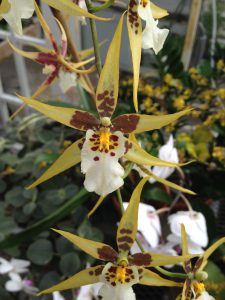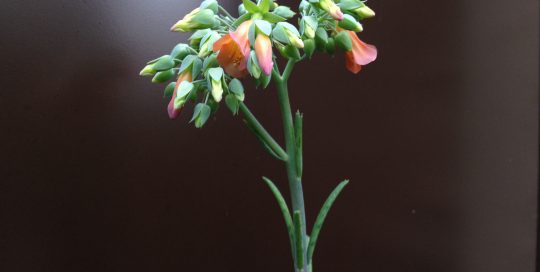Orchids and the Indianapolis Museum of Art
Views: 5084

Last weekend, the scheduling gods smiled upon me so that a baby shower for one of my best friends fell on the same weekend as the last day to see the “Color Me Orchid” exhibit at the Indianapolis Museum of Art (IMA).
I have been meaning to visit the IMA’s gardens for years, which include the 26 acre Oldfields-Lilly House and Gardens, the 26 acre main museum campus, the Madeline F. Elder greenhouse and shop, and the 100 acre Virginia B. Fairbanks Art and Nature Park, but something always came up whenever I had a day to go explore.
This short visit to see the orchid exhibit confirmed that I need to go back and spend a whole day in these gardens. The spring bulbs and Hellebores were just beginning to bloom, and from the path between the museum and the greenhouse, I could see the bones of the gardens and enticing views of the areas that lay beyond, begging for further exploration.
Later Exploration
I travelled up to the IMA with another best friend and her two toddler-age children to go see the orchids. We only had an hour to check out the orchid exhibit before the baby shower, but this seemed like plenty of time for the attention span of a two and three-year old. I shouldn’t have worried though, as the kids were almost as excited about seeing the flowers as I was and, even though we had to remind them not to grab the flowers every thirty seconds or so, I think we actually could have spent more time there.
It was one of the first really warm days of spring, and the greenhouse was crowded with visitors, but we all shuffled along patiently to see the amazing variety of shapes and colors of the orchids. The exhibit was housed in three rooms of the greenhouse, which were full of examples from five of the most popular species of orchids: Cattleya, Dendrobium, Oncidium, Paphiopedilum, Phragmiedium, and Phalaenopsis. There were also other interesting plants intermingling with the orchids such as Tillandsia (Air plants), Bromeliads, and Platyceriums (Staghorn fern), but the orchids were definitely the stars of the show.
Varieties
Orchid flowers come in so many interesting shapes and colors because they are masters at luring specific pollinators to their blooms. As many as one-third of orchid species’ blooms are so enticing that they don’t even need to produce any nectar to attract pollinators. For example, some orchids mimic the shape and color of a specific female insect so well that they trick the male into mating with the flower, effectively covering him in pollen that he will carry on to the next flower. Others release their scent only at night to attract a specific moth.
The diversity is among orchids is amazing and scientists have only recently started to understand the complex genetics involved in the evolutionary relationship between orchids and their pollinators. Recent discoveries indicate that certain proteins found in orchid DNA are what sets them apart from other flowering plants, thus allowing orchids to have more variety in the shapes and colors of not only their petals, but of their lips and sepals as well. I won’t pretend to understand plant genetics on that level, but it is fascinating that we are just beginning to scratch the surface of the science behind orchids.
The IMA
I would highly recommend visiting the IMA and its gardens if you find yourself in Indianapolis. Anyone could easily spend an entire day exploring the museum and its gardens, not to mention enjoying one of the many programs and activities offered throughout the year for people of all ages and interests. The kids both chose a plant to take home and we walked away with a sigh of relief that we hadn’t had to purchase any rare or expensive orchids due to a child’s need to satisfy their curiosity through touch. Then we all agreed that we would definitely have to come back when we had more time to experience the rest of this wonderful place. You can find out more about the IMA on their website at http://www.imamuseum.org/.
Meet Abbi Hayes
Abbi's Recent Posts

Kalanchoe delagoensis: Mother of Millions







